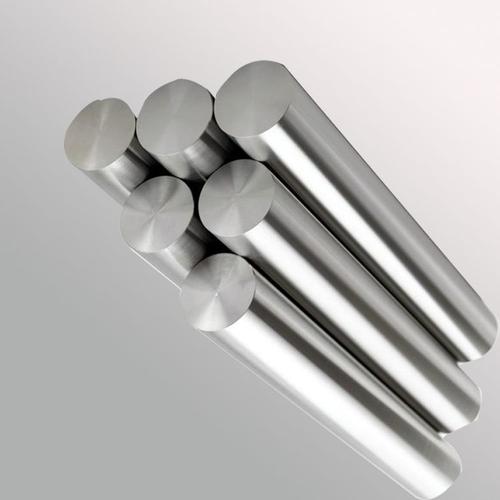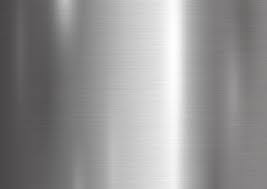What is the difference between 201 stainless steel and 304 stainless steel?
 What is the difference between 201 st...
What is the difference between 201 st...Stainless steel plate is a non-rusty alloy steel, its surface is smooth, plasticity, toughness, and mechanical strength are very good, corrosion resistant, and laid an important material technology for the development of modern industries, and the development of scientific and technological progress. So what is Stainless steel plate? How to define classifications? What is the main purpose?
Stainless steel plates refers to a steel plate that is resistant to atmospheric, steam and water. The main alloy elements in stainless steel are chromium. Chromium content is usually between 10% and 20%. Stainless steel is welcomed by its high corrosion resistance. The corrosion resistance of stainless steel is 200 times that of low carbon steel.

(1) Chromium stainless steel:
Such stainless steel except for iron base, the main alloy element is chromium. Some also contain one or more elements such as silicon, aluminum, tungsten, molybdenum, nickel, titanium, vanadium, and the contents of these elements are between 1 to 3%, respectively.
(2) Chromium nickel stainless steel:
Such stainless steel except for iron radiographs, the main alloy elements are chromium and nickel. Some are also included with one or several elements such as titanium, silicon, molybdenum, tungsten, vanadium, boron, and the content of these elements in the amount of 4% or less.
(3) Chromanganese nitrogen stainless steel:
Such stainless steel except iron except, the main alloy elements are chromium and manganese, and most steel also contain 0.5% or less nitrogen. Some are also one or more elements such as nickel, silicon, copper. These elements are only 5% below the contents of the steel.
.png)
(1) ferrite - i.e., chromium-containing non-nickel-free stainless steel. Such steel cold processing can harden it to some extent, and heat treatment cannot be. This type of steel is always magnetic.
(2) Martensitic-such stainless steel contains a small amount of nickel except for individual steel numbers, most steel numbers only contain chromium, and the advantage is that heat treatment can hardened. Such steels are always magnetic.
(3) Austenite - i.e., a stainless steel containing chromic nickel or chromium nickel manganese or chromanganese nitrogen. This type of steel can only be hardenated coldly; heat treatment can only be softened. Magnetic in an annealing state. Some will be magnetically after cold processing.
The above three classifications are only the matrix of steel, and the effect of stabilizing the austenite and forming ferrite in the steel cannot be balanced. Therefore, the organic tissue of the actual use in the industry is: martensite-ferrite, austenite-ferrite, austenite-martensite, etc. transition type stainless steel, and Markov Stainless steel of carbide tissue.

(1) Stainless steel - can resist corrosion in air and weak corrosion media. Steel having this function is called stainless steel. Its representative steel number is: OCR13, 1Cr13, 2Cr13, 3Cr13, 4Cr13, CR14, CR15, 9Cr18, 9Cr18MOV, CR14MO, and the like.
(2) Acid-resistant steel - can resist corrosion in various corrosive media such as acids, alkali, salt solutions, etc.. Steel are representative: Cr17, Cr28, Cr17Ti, Cr18Ti, Cr25Ti, Cr17Mn9, Cr17Ni2, OCr18Ni9,1Cr18Ni9,2Cr18Ni9,2Cr13Ni4Mn9, Cr14Mn14Ni, Cr18Mn8Ni5, Cr18Mn10Ni5MO3,1Cr18Ni9Ti, Cr17MO2Ti, Cr25MO3Ti, Cr18Ni11Nb, Cr18Ni12MO2Ti, Cr18Ni12MOTi, Cr18Ni9Cu3Ti, Cr18Ni18MO2Cu2Ti , CR18NI20MO2CU2NB, etc.
(3) Agential steel (also known as antioxidant steel) - has sufficient thermal stability at high temperatures, and can resist gas corrosion without peeling the oxidized iron. Simply put, it is a non-gaseous steel in high temperature. Its representative steel number includes a temperature suitable for 900 ° C: 4Cr9Si12, CR13, CR18Si2, etc., the temperature is applied between 900 to 1100 ° C: CR17Al 4Si, CR24Al3Si, CR25Si2, and the like.
(4) Heat-resistant steel (also called thermal steel) - can resist gas corrosion (incorporated) and have sufficient strength at high temperatures. Simply put, it is sufficient strength at high temperatures, and steel. Its representative steel number includes a temperature suitable for 600 ° C: 1Cr13, CR11MOV, etc. Applicable to: Cr5Mo, 4Cr10Si2Mo, 1C18Ni9TI, 1Cr18Ni 12Ti, etc.; temperature is applicable between 650 to 800 ° C: 1Cr14Ni14W2MO, 4Cr14Ni14W2MO , CR15NI36W3Ti, etc.
(5) Electrothermal alloy - This type of alloy has a high resistance and does not lift it in use. Its representative steel number is: CR13Al14, OCR17Al5, 1Cr17Al5, CR20Al5, OCR25Al5, 1Cr25Al5, and the like.
The above classification is based on the standard classification based on the Metallurgical Industry Department YB10-59 and 11-59. The national standards of GB1220-75 and GB12221-75 is to collect stainless steel and acid-resistant steels as stainless acid-resistant steel; non-condensate steel and heat resistant steel referred to as heat resistant steel. In the folk, it is used to call stainless steel, or will be able to attract it by magnet. "Stainless iron."

(1) Welding
Different of the use of the product are also different on the requirements of welding performance. A type of tableware is generally not required for welding performance, even some pot companies. However, most products require raw material welding performance, like two types of cutlery, thermal insulation cups, steel pipes, water heaters, water dispenser, etc.
(2) Corrosion resistance
Most stainless steel products require corrosion resistance, like one, two types of tableware, kitchen, water heaters, water dispenser, etc. The solution, washing, drying, weight loss, to determine the degree of corrosion (Note: When the product polishing, the ingredient containing Fe is in the abrasive cloth or sandpaper can cause rust in the surface of the test).
(3) Polishing performance
Today's social stainless steel products are generally polished during production, only small products such as water heaters, water dispenser liner, etc. do not need to polish. So this requires that the polishing performance of the raw material is very good. The factors affecting polishing performance have the following points:
1,surface defects in raw materials. Such as scratches, numbness, perfume, etc.
2, material material problem. The hardness is too low, it is not easy to brighten when polished (BQ is not good), and the hardness is too low, and the orange peel is prone to the surface of the deep tensile time, thereby affecting BQ. A high hardness is relatively good.
3, After deep stretching products, the region surface of the deformation amount will also be small and RidGing, which affects BQ.
(4) Heat resistance
Heat resistance means that stainless steel still maintains its excellent physical mechanical properties at high temperatures.
The effect of carbon: carbon is strongly formed in austenite stainless steel. Avore and expand the elements of the austenite area. The ability of carbon forming austenite is approximately 30 times, and carbon is a gap element, which can significantly increase the strength of the austenite stainless steel by solid solubility. Carbon also increases the performance of the austenitic stainless steel in a high concentrated chloride (such as a 42% MgCl2 boiling solution).
However, in austenite stainless steel, carbon is often considered harmful elements, which is mainly due to some of the conditions in the corrosion resistance of stainless steel (such as welding or by 450 to 850 ° C), carbon can be in steel. Chromium forms high chromium CR23C6 carbon compound to cause topical chromium to deplete the corrosion resistance of steel, especially the corrosion resistance of the steel. therefore. In the 1960s, the newly developed chromic nickel-based stainless steel is mostly the carbon content of less than 0.03% or 0.02% ultra-low carbon type. It can be known that with the decrease in carbon content, the crystal corrosion sensitivity of steel is lowered, when the carbon content is lower than the carbon content 0.02% have the most obvious effect, and some experiments also pointed out that carbon also increases the tendency of the neutral etch of chrome citronitic stainless steel. Due to the harmful effect of carbon, not only during the smelting process of the austenite stainless steel, the carbon content should be controlled as required, but also in the process of subsequent heat, cold processing and heat treatment, but also to prevent the surface of the stainless steel from carbon, avoid chromium carbide Precipitate.
(5) Corrosion resistance
When the number of chromium amounts in the steel is not less than 12.5%, the electrode potential of the steel can be mutated, and the negative potential is liter to the positive electrode potential. Prevent electrochemical corrosion.



(1) The raw metal is melted in the electric furnace.
(2) Semi-finished steel is passionate, passing through giant rolls and forming into the bar, wire, sheet, sheet.
(3)Then this stainless steel form is a metal that is exciting and cooling to the strength and the recommended temperature. The heat of the heat depends on the type of steel. When high temperatures result in lower strength and more tough materials, high strength is produced.
(4)Use a wide variety of approach to cut, cut out, saw, licking, flame cutting, plasma engine incision, etc.
(5)Finally, finishing is an important aspect of stainless steel treatment. Fixing method varieties are applied according to the necessary stainless steel materials. This includes odor, remove scales, polishing, tumbling, sandblasting, wire brushing and pickling technology.
(6)The method of obtaining the last stainless steel product, welding varieties and research methods is treated to further shape. Laser nuclear fusion welding is one of the welded stainless steel methods. The method of accurate research is used to give the size of the product.
 What is the difference between 201 st...
What is the difference between 201 st... Why is 316 stainless steel better tha...
Why is 316 stainless steel better tha... 400 series stainless steel science
40...
400 series stainless steel science
40... How to distinguish the processing tec...
How to distinguish the processing tec... Non-standard design materials of bras...
Non-standard design materials of bras... What type of titanium alloy does Tc4 ...
What type of titanium alloy does Tc4 ...